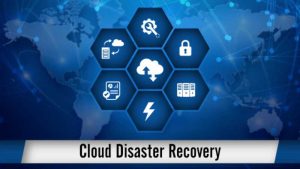Safeguarding Data While Migrating to the Cloud

Safeguarding Data While Migrating to the Cloud
Businesses are becoming more and more concerned about the security of these assets as they move their critical systems and data to the cloud. Several security risks are involved in moving to and from different cloud services, mainly when working with public cloud services. Improper handling of these vulnerabilities may result in negative consequences. This includes fines from regulators for harm to one’s reputation, illegal access to private information, and disruptions to corporate operations. In this post, we explore the common security concerns companies face when migrating their data to the cloud and offer insightful advice on mitigating these risks.
Table of Contents
Moving to the Cloud Is Dangerous
It may be challenging to navigate the complexities of cloud migrations, particularly in light of the possible security threats. According to recent research, global cloud investment increased to $591.8 billion in 2023 from $490.3 billion in 2022, a remarkable 20.7 percent growth. In reality, businesses frequently have thorough security plans and resources before and after moving to the cloud. Unfortunately, there may be a severe risk to the security and integrity of these priceless assets due to the interim state of data, apps, and infrastructure throughout the transfer process.
For example, when moving data from on-premises storage to a cloud environment, there is a crucial step when security flaws might occur. These assets may need to be sufficiently secured throughout transportation, even if they are typically safeguarded in their initial and ultimate forms. Hackers may be able to obtain private information, possibly resulting in data loss or breaches.
Furthermore, conventional security measures won’t effectively protect assets in this transitional phase. One instance is business logic misuse, where complex threats are difficult for traditional security mechanisms like Web Application Firewalls (WAFs) to recognize and address. These threats can range over several API calls across one or more sessions and frequently do not follow standard attack patterns. Due to this complexity, security teams need help to identify and neutralize threats in real time.
Security experts may use contemporary cybersecurity techniques or solutions to reduce these threats and offer more complete protection. For instance, security measures must anticipate and recognize possible threats and concentrate on known weaknesses and attack patterns. Advanced systems can also examine patterns in several API calls and API sessions to find and stop more complex threats. In this manner, they can assist in safeguarding resources throughout the precarious transitional phase of cloud migration.
The Best Methods for Safe Cloud Migration
A recent research found that IT professionals claimed total cost reductions of 20% after moving to a cloud environment. Moving to the cloud undoubtedly has several advantages, such as lower overhead, increased productivity, and streamlined operations. But this complex undertaking requires careful preparation, a thorough comprehension of your present system, and a well-thought-out migration procedure.
Take into consideration these best measures to guarantee a safe and effective cloud migration:
- A clear understanding of the overlap between IT and business objectives is necessary to cooperate and concentrate on shared priorities and goals. Moving to the cloud may encourage digital transformation by fostering creativity and agility and coordinating with corporate goals.
- Describe a Cloud Governance Model. This model should guarantee quality of service, automation, interoperability, and change adaptability and establish guidelines for cloud usage. It should also include possible security risks and administration difficulties while using the cloud.
- Early Staff Training: This will enable your staff to confidently and successfully optimize cloud use. Training should also address resistance to change and knowledge gaps to facilitate a more seamless relocation process.
- Operational Processes: Torational workflows might need to be automated or reorganized to use cloud capabilities. By preparing for these adjustments, you can guarantee smooth company operations after the relocation.
- Know Your IT Assets: To ensure effective cloud performance, evaluate how well IT resources work with the cloud environment. By doing this, your company can maximize the advantages of your cloud migration and prevent any possible mismatch in its cloud investments.
- Choose the Correct Partner: The appropriate cloud partner may offer help and strategic direction throughout the migration process. To optimize cloud utilization, they may help guarantee that cloud investments align with organizational objectives.
- Start Small: By beginning with more superficial apps, you may gain the trust of stakeholders to move to more sophisticated applications while also testing the waters and validating your approach.
Keeping Multi-Cloud and Hybrid Migration Safe
Businesses may need help protecting data in hybrid and multi-cloud environments, as well as in more conventional on-premises settings, as we shift towards cloud-hosted services. Given this circumstance, we must first consider our data collection strategy. This has gotten more complicated with the growth of cloud-hosted services, which are very different from conventional on-premises techniques.
It is, therefore, important to consider what functions optimally in terms of integration and operations. It involves more than merely obtaining unprocessed data and efficiently storing it. That is not the actual objective. The capacity to combine data from many sources, provide a comprehensive picture of all data repositories, and evaluate it for improved data security is more crucial.
There needs to be more than just satisfying regulatory criteria to provide robust data security. Security teams must employ a lot of raw data to increase the signal-to-noise ratio at the database level. Through this procedure, we can extract useful information that may be examined and used to increase security further. In particular, aligning with solutions that enable swift adaption to new data security methodologies and tactics is critical for cloud-hosted services. Frequently integrated with cloud systems, these solutions seamlessly extend on-premises controls into cloud environments.
Yes, moving to the cloud has difficulties, especially regarding data protection. Data, apps, and infrastructure in an interim state during migration may be vulnerable to cyberattacks due to these vulnerabilities; by putting best practices for safe cloud migration and secure hybrid and multi-cloud installations into practice, businesses may significantly reduce these risks. IT workers gain from remembering that, even though it may appear complicated, maintaining data security during cloud migrations is achievable with the appropriate approaches and resources. Therefore, cloud migration is still a practical and safe choice for companies looking to take advantage of the cloud’s advantages.
Also read:- Ten Ways Your Business Can Gain from Graphic Design




